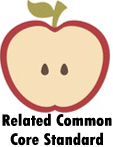Manners Worksheets To Print:
Good or Bad? - Cut and paste the manners into the correct boxes.
Green or Red - See which of these behaviors is considered positive and which are negative.
Match-Up - Match each picture to what you should do or say in that situation.
Lunch Time - If it is okay to do it during lunch time, put it in the YES box. If it is not okay, put it in the NO box.
Think About It - Have you ever been around someone when they were not acting appropriately? How did it make you feel?
The Playground - Match each piece of playground equipment to the manners that
you should use when you are using it.
Restaurant Etiquette - In some places, you are expected to behave in a particular way.
The way that you are expected to behave in a restaurant is called restaurant etiquette.
Cell Phones - Yes, there is a right and wrond way of how to use these in public.
The Golden Rule - The golden rule is to "do unto others as you would have them do
unto you." This means that you should treat others the way that you want to be treated.
Cartoon Time - Draw a cartoon to illustrate each situation. What is the right thing to say in
each situation? Write it in the speech bubble.
Manners That We Hope to Instill in Our Students
There are many unwritten rules that act as the fabric of our culture. These all lead to helping ourselves and others feel valued and comfortable in variety of situations. Many students may come across as rude, but often it is that they do not understand that this behavior is considered rude or that their actions even affect others around them. With the fast pace of modern life parents often do not have the time or find an opportunity to teach their youngsters acts that are deemed socially acceptable.
In general, just presenting the concept of a specific manner to students does not often help them make it part of their daily routine. They need constant reinforcement and encouragement. It all starts with modeling and projecting the behavior that we wish our students to have. You can start identifying correct behaviors through role-play and this often requires a bit of explanation. In your daily routine it is often helpful to reinforce and praise positive behaviors and damply mention any negative behaviors taking place.
We will take a minute to look at some common manners that we should look to instill in our students:
Saying, "Please." and "Thank you." - When we ask for something we say "Please." When we receive something from another person we say, "Thank you." I find that you can teach this manner quickly simply through an explanation and constant modeling.
Getting the Attention of Others - Students often do not understand that if other people are talking, it is rude to interrupt them, unless it is an emergency. It sometimes is a struggle to have students learn to wait until there is a pause in their conversation. Patience is something this age level lacks. I find that it is not difficult to teach them to say, "Excuse me" to get the attention of others though.
Asking Permission - At the classroom level it is an easy habit to teach students to ask the teacher permission for various things, but more of a struggle to get them to ask other classmates’ permission to use their personal belongings. I would start with something as simple as a pencil.
Commenting on Others - I start by teaching them that a compliment is always welcome. People will always want to hear good things about themselves. Negative comments are one of the most difficult things to teach youngster. It is not the concept of making negative comments that is the issue. Most students have trouble understanding how what they say affects others because they cannot identify their own comments as negative. I often ask them to say to themselves, "Would I want someone to say that to me?" That usually gets them headed in the right direction.
